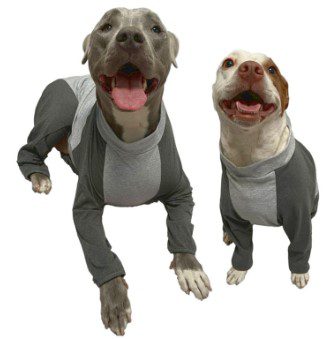

Dogs affected by a latex rubber allergy may experience signs such as dermatitis or skin allergies, itching, sneezing, coughing, difficulty breathing, swelling of the face, and hives. These symptoms can range in severity depending on the dog’s individual sensitivity and amount of latex rubber exposure.
Dogs affected by a latex rubber allergy usually have a sensitivity to proteins present in latex rubber. These proteins may get on a dog’s skin when exposed to latex rubber products directly, or when exposed to the air within an enclosed space where latex rubber items are present such as latex balloons. The proteins on the dog’s skin then cause an allergic reactions, resulting in the symptoms listed above.
The diagnosis of a latex rubber allergy affecting dogs can be determined by observing the signs and symptoms noted above. A thorough physical examination may be performed by a veterinarian to rule out any other underlying conditions and an allergy test may be ordered to confirm the diagnosis. Treatment typically involves minimizing exposure to latex rubber and providing appropriate medications to reduce the symptoms.
This allergy can be quite serious and if left untreated, may result in difficulty breathing, potentially leading to death. The mortality rate of a dog with a latex rubber allergy that remains untreated is unknown, as it will vary depending on the severity of the allergy. It is best to take measures to avoid exposure to latex rubber for a dog that is known to be allergic to the substance in order to best protect its health.
The treatment for dogs affected by a latex rubber allergy will depend on the severity of the reaction. For mild reactions, the dog should be removed from the source of the latex rubber and given a topical corticosteroid to reduce inflammation and itchiness. In more severe cases, the dog may be prescribed an antihistamine or a steroid to reduce the symptoms and a longer-term treatment plan may be recommended.
To prevent a latex rubber allergy in dogs, it is important to avoid contact with items that contain latex rubber, such as balloons, rubber toys, and rubber bands. If your dog is exposed to latex rubber, it is important to monitor them for any allergic reactions. For dogs that have already developed a latex rubber allergy, corticosteroid medications may be prescribed to relieve symptoms. In extreme cases, allergy shots may be recommended to desensitize the dog to the allergens. It is also important to keep the dog’s skin and coat clean and groomed regularly to prevent irritants or allergens from settling onto the skin. Lastly, be sure to talk to your veterinarian regularly to discuss any changes in your dog’s symptoms and any new treatment plans.
This dog allergy is not contagious and should not affect humans. However, people with asthma or other breathing problems may experience increased sensitivity when exposed to airborne irritants from latex rubber. It is best to avoid contact with dogs known to have a latex rubber allergy if you have a breathing problem.
Home remedies that may be useful in managing a latex rubber allergy include bathing the dog in a medicated shampoo, removing all sources of latex rubber from the home, providing the dog with antihistamines, avoiding contact with latex rubber when possible, and using a collar or harness made of a non-allergenic material.
While these home remedies can be helpful in managing a latex rubber allergy in dogs, it is always best to consult with a veterinarian to determine the best course of treatment for your pet.
Several breeds of dogs may be more vulnerable to a latex rubber allergy, such as poodles, labs, Spaniels, Terriers, and Collies. Symptoms of the allergy may include itching, skin rash (dermatitis), sneezing, nasal discharge, and coughing. Dogs who are particularly sensitive to latex may also experience vomiting, diarrhea, and respiratory difficulty. It is important to consult a veterinarian if your pet exhibits any of the above symptoms to ensure proper diagnosis and treatment.
Have you ever had a dog experience a latex rubber allergy? If so, how did you respond, how did you feel, and how did you manage the process? Dealing with potential allergies of any kind can be difficult and an emotional journey. We hope that the process was and will be a smooth one for you and your pup. We truly wish you and your 4-legged best friend all the best in the future.